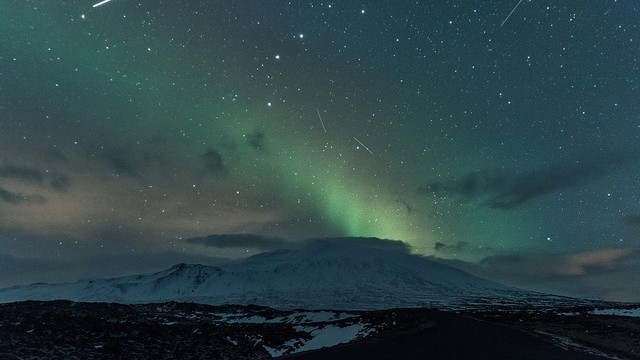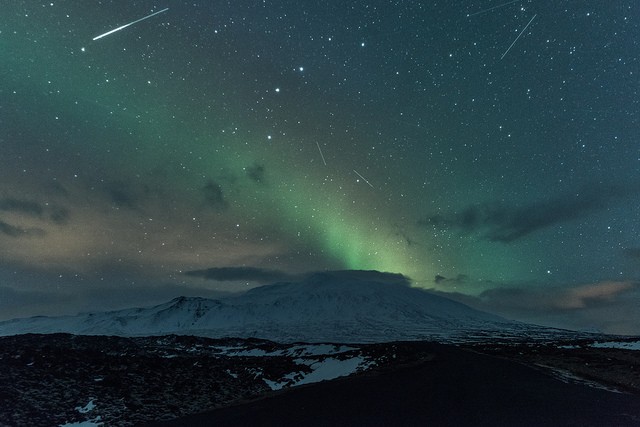some of these are AWESOME
This will tell you when and where to look. As we enter 2016 there are going to be some great opportunities to view meteor showers. This list are exact time frames with longitudinal and latidudinal directions. We hope you get a chance to catch some of these! Here in a quick excerpt on them:
Many meteor showers, caused by the Earth passing through streams of debris left behind by comets and asteroids, occur as regularly as clockwork, year on year. But whether you can see a great display in the night sky from a given shower varies from year to year, for a variety of reasons.
Here is a cool pic of a metor shower in the Northern Lights courtesy of Diana Robinson

1. The Quadrantids (N)
Active: December 28, 2015 – January 12, 2016
Forecast Maximum: January 4, 8am UT = 3am EST (East Coast, US) = 12am PST (West Coast, US)
2. The Eta Aquariids (S and low latitudes N)
Active: April 19, 2016 – May 28, 2016
Forecast Maximum: May 5, 8pm UT = May 6, 6am AEST (QLD/NSW/ACT/Vic/Tas) = May 6, 3am AWST (WA)Piscis Austrinids, Southern Delta Aquariids and Alpha Capricornids (N/S)Active: Late-July/Early-August
Forecast Maximum: July 28-30, 2016, around midnight local time
3. Piscis Austrinids, Southern Delta Aquariids and Alpha Capricornids (N/S)
Active: Late-July/Early-August
Forecast Maximum: July 28-30, 2016, around midnight local time4. The Perseids (N)
Active: July 17, 2016 – August 24, 2016
Forecast Maximum: August 12, 1-4pm UT = 9am-12pm EDT (East Coast, US) = 6-9am PDT (West Coast, US) = 10pm-1am, August 13 JST (Japan)5. The Ursids (N)
Active: December 17 – 26, 2016
Forecast Maximum: December 22, 9am UT = 4am EST (East Coast, US) = 1am PST (West Coast, US) = 6pm JST (Japan)
Enjoy and have a great new year!
thanks to theconversation.com for the great info
